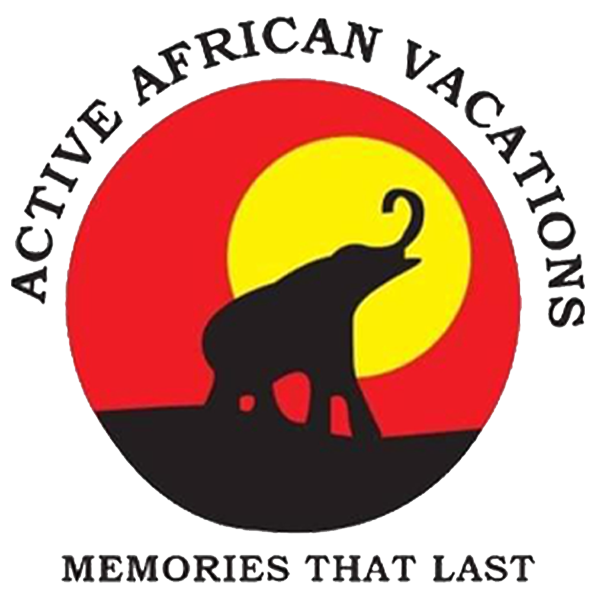Attractions in the Mikumi National Park
The cultural and ecological sites that make up Mikumi National Park highlight the park’s rich biodiversity and stunning scenery. The park is home to the following must-see attractions:
The Mkata Floodplain:
The Mkata Floodplain, a large area of grassland and seasonal wetlands that dominates the park’s center, is an important home for animals. At the park’s many vantage points, guests may take in breathtaking views of the floodplain and see herbivores like zebras, wildebeests, buffalo, and giraffes and predators like lions and hyenas swarming around waterholes.
The Hippo Pool:
Hippos sunning and frolicking in the water may be seen close to the entrance of the park at the Hippo Pool. The pool is a perfect spot for birding since many various types of birds visit it. Picnics and walks around the Hippo Pool let guests enjoy the nearby vegetation and fauna.
The Mkata River:
As it winds its way through the park’s core, the Mkata River supplies animals with water and food all year round. As they drive along the riverbanks, visitors can see creatures coming and going from the water, or they can go on guided boat safaris to learn more about the river and its ecosystems. Nature lovers will find the river’s abundance of crocodiles, hippos, and waterbirds to be an enthralling sight.
The Uluguru Mountains:
Magnificently rising from the surrounding plains, the Uluguru Mountains to the northeast of Mikumi National Park provide breathtaking panoramic views of the park and beyond. Rare plant species found nowhere else in the world coexist with monkeys, babies, and small antelope species in the mountains. Guided hikes, birdwatching trips, and cultural exchanges with local indigenous tribes are also available to visitors.
The Kikoboga Wildlife Center:
Situated close to the park’s entrance, the Kikoboga Wildlife Center provides educational displays, interactive exhibits, and guided tours to help visitors learn about the park’s flora and fauna. Guests can learn about the park’s ecology and history as well as local wildlife species through the center’s exhibits, which highlight the significance of protecting biodiversity and taking care of the environment.
Best Time to Visit Mikumi National Park
Your interests and tastes should be your primary guide when deciding when to visit Mikumi National Park. But most people agree that the months of June through October, known as the dry season, are the best for going on outdoor adventures and seeing animals. During this season, you can enjoy game drives, walking safaris, and other safari excursions thanks to the mild and dry weather and minimal foliage, which makes wildlife easier to observe. The Great Migration of herbivores also happens during the dry season, which makes seeing wildlife in the park even more spectacular. But you can visit Mikumi National Park at any time of year, and you’ll find something new and exciting to see and do depending on the season.
In Tanzania’s southern region lies Mikumi National Park, the country’s fourth largest. Safaris in Mikumi National Park provide excellent opportunities to see a wide range of animals. Whenever the safari events are held there, these trips are available all year round. In Mikumi National Park, safari goers have a fantastic chance of seeing some of the most popular animals in the world: rhinos, elephants, lions, leopards, and buffalo. While on safari at Mikumi National Park, guests may see a wide variety of animals, including zebras, impalas, hippos, giraffes, sable antelopes, jackals, spotted hyenas, and hartebeests.
You can visit Mikumi at any time of year; it’s a year-round destination. However, if you are considering a trip to the region, the best time to visit Mikumi National Park is between June and October. The creatures are simple to capture due to the lack of vegetation and water. The best weather for a safari is dry and sunny, with little chance of precipitation and low humidity. Unless you happen to go there during the dry season, September through October are your best bet for seeing the massive hippos at the hippo pool. But there are a lot of tourists and a big taxi line during peak season, so it can be a bit of a pain. During this time of year, you can see not only newborn animals and the environment in general but also hunting and the intriguing dynamic between predators and their victims.
How to Get to Mikumi National Park
Discover the wonders of Mikumi National Park in Tanzania, tucked away between the Uluguru and Rubeho mountains to the northeast and the Rubeho and Udzungwa highlands to the southwest. This premier safari area is a must-visit for any wildlife safari in Tanzania.
One of Tanzania’s most renowned parks, Mikumi National Park is often liked to the iconic Serengeti Plains; it shares a boundary with the Selous Game Reserve, the biggest game reserve in Africa. Mikumi National Park is home to a wide array of wildlife, including elephants, giraffes, buffalo, zebras, moose, wildebeest, lions, and many rare bird species. During the dry season, the waterholes and the hippos’ pool in particular become a wildlife magnet, drawing in numerous elephants and buffalo.
How to get to Mikumi National Park is a question that travelers ask a lot. The easiest way to reach the park is via Dar es Salaam, the capital of Tanzania, which is close by. Dar es Salaam, the once-busting city of Tanzania, is the departure point for the vast majority of safaris to Mikumi National Park. When you fly into Dar es Salaam’s Julius Nyerere International Airport, your pre-arranged tour operator will pick you up and take you straight to the park.
Mikumi National Park is easily accessible from all around Tanzania thanks to its central location in the southern region. You can reach the park in several ways, including by plane, road, or train:
By Air:
Julius Nyerere International Airport (Dar es Salaam): Tanzania’s main entry point for international passengers is Julius Nyerere International Airport in Dar es Salaam. Passengers can board domestic flights at the airport to travel to either Morogoro Airport or Kilimanjaro International Airport, both of which are close.
Kilimanjaro International Airport (JRO): The closest airport to Mikumi National Park is Morogoro Airport, although Kilimanjaro International Airport does provide flights to that airport as well. Tourists can arrange for transportation to the park on the ground from Morogoro.
Morogoro Airport: Morogoro is a small village next to Mikumi National Park, and this airport serves the surrounding area. Morogoro Airport is serviced by several domestic airlines, giving those who prefer flying a handy choice.
By Road:
From Dar es Salaam: With a road distance of about 283 km (176 miles) west of Dar es Salaam, Mikumi National Park is well-located for visitors. The park entry is accessible from the A7 highway, which departs from Dar es Salaam and continues through Morogoro.
From Morogoro: The roughly 200-kilometer (124-mile) travel to Mikumi National Park can be accomplished by hiring a cab or a private vehicle, whether you are already in Morogoro or are arriving by flight. Although most of the time the roads are in decent condition, drivers should be ready for the odd bump.
From Other Cities: From other major towns and cities in Tanzania, Mikumi National Park can also be reached by road. Visitors can easily visit the park from popular destinations like Dodoma, Iringa, or Mbeya. Just be sure to plan your itinerary carefully.
By Rail:
Tanzania Railways Corporation: Tanzania does have some train services, including certain routes that go through Morogoro. However, this is far less frequent than flying or driving. After reaching Morogoro by train, visitors can arrange for a transfer to Mikumi National Park.
Travelers to Mikumi National Park in Tanzania can look forward to breathtaking scenery and the chance to see wildlife no matter which method of transportation they choose.
Accommodation Options in Mikumi National Park
There is a wide variety of lodgings in Mikumi National Park to meet the demands and preferences of all visitors. In and around the park, you can discover a wide range of accommodations, from posh lodges to more affordable guesthouses. Some possible lodging choices are as follows:
There is a wide range of accommodation available at safari sites within and surrounding Mikumi National Park. Nearby, you will find a variety of lodges ranging from budget to luxury options, such as Mikumi Tan-Swiss Lodge, Mikumi Adventure Lodge, Camp Bastian Mikumi, Voyage Village Hotel, Angalia Tented Camp, and Vuma Hills Tented Camp.
Visit Mikumi National Park in Tanzania while on a safari to see a wide array of animals in their natural habitat.
Stanley’s Kopje.
Standing on a rocky outcrop in the middle of the Mkata flood plain, this is Mikumi’s sole intimate, private campsite. Its dominion over the park’s premier game-watching location, the Mwanamboga waterhole, is quite remarkable.
For individuals who desire to be utterly immersed in nature, this private camping experience blends modern conveniences with the authentic bush, perfect for nature lovers. Perched on wooden platforms surrounding the rocky outcrop that overlooks the floodplain are twelve tents that were specially built for the occasion.
There is plenty of space between tents for complete seclusion, and each tent has its own private bathroom (shower only) and two twin beds (with mosquito nets) for guests to use as needed. If you need more beds, they can accommodate you. Each guest room has its own terrace with views of the grasslands. Water, tea, and coffee are on hand, and electricity is on until 22:00. A complementary laundry service is available to guests.
The banda-style thatched dining area is a light and airy place to eat at camp, and it overlooks the grasslands beyond.
Every morning and night, open four-wheel-drive vehicles are used for all game drives around the park. Walking safaris are an option, but visitors should realize the risks and make an inquiry in advance. There is a swimming pool and towels for those who would like to unwind.
The comforting glow of campfires and friendly hospitality makes for an idyllic bush setting, perfect for experiencing up close and personal the exhilaration of being among the myriad of wild animals in timeless.
Udzungwa Falls Lodge.
Its location is adjacent to Udzungwa National Park. Ideal for visitors to the national park, the lodge provides cozy lodging.
Situated on an expanse of land, this lodge offers forty roomy suites furnished with contemporary conveniences. The rooms come with minibars, televisions, seating areas, and the ability to make tea and coffee. Guests are welcome to utilize the conference rooms and keep connected with our Internet connectivity. Getting a refreshing drink in the bar area is the perfect pre-pool gathering spot. An on-site eatery is also available to meet your gastronomic needs.
There is a wide variety of things to do, from exploring the local communities and sugar plantations to going on mountain climbs and hiking excursions and to the fish market.
Vuma Hill Tented Camp
Mikumi National Park’s game concentration region is located in the verdant Vuma mountains, which provide a view of the Mkata plains. Because of the beautiful surroundings and refreshing forest breezes, this lodge is the perfect spot to spend the night after a long day of wildlife drives.
There are sixteen cozy tents available for your stay at Vuma Hill Tented Camp. Nothing is missing from any of the tents except for the front shaded wooden porch and the rear en suite toilet amenities.



